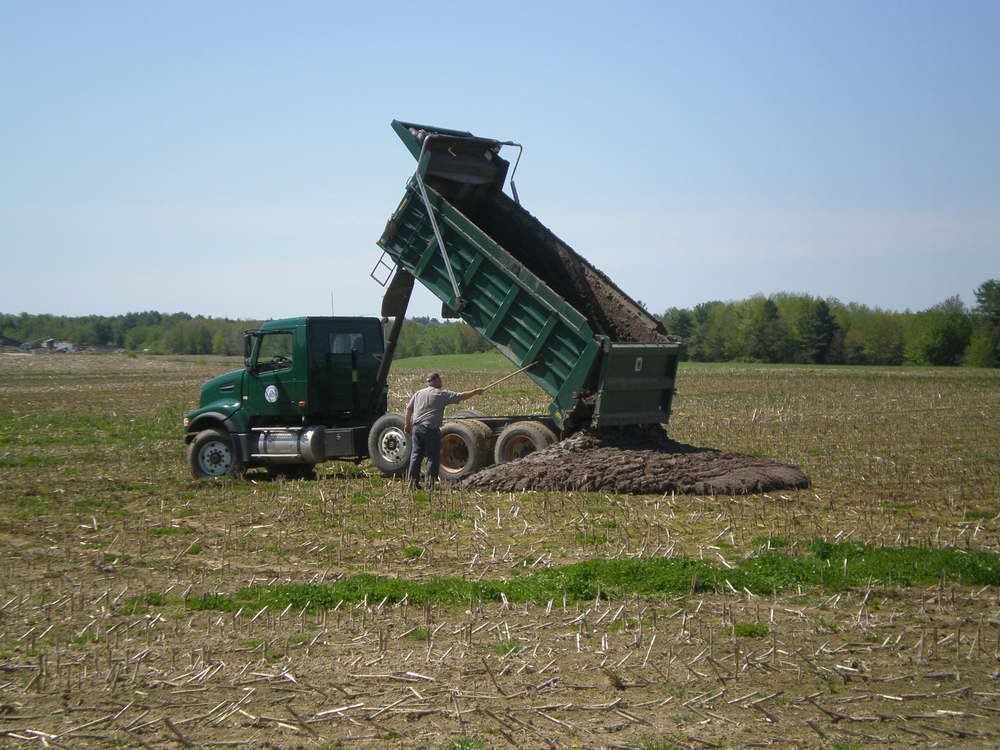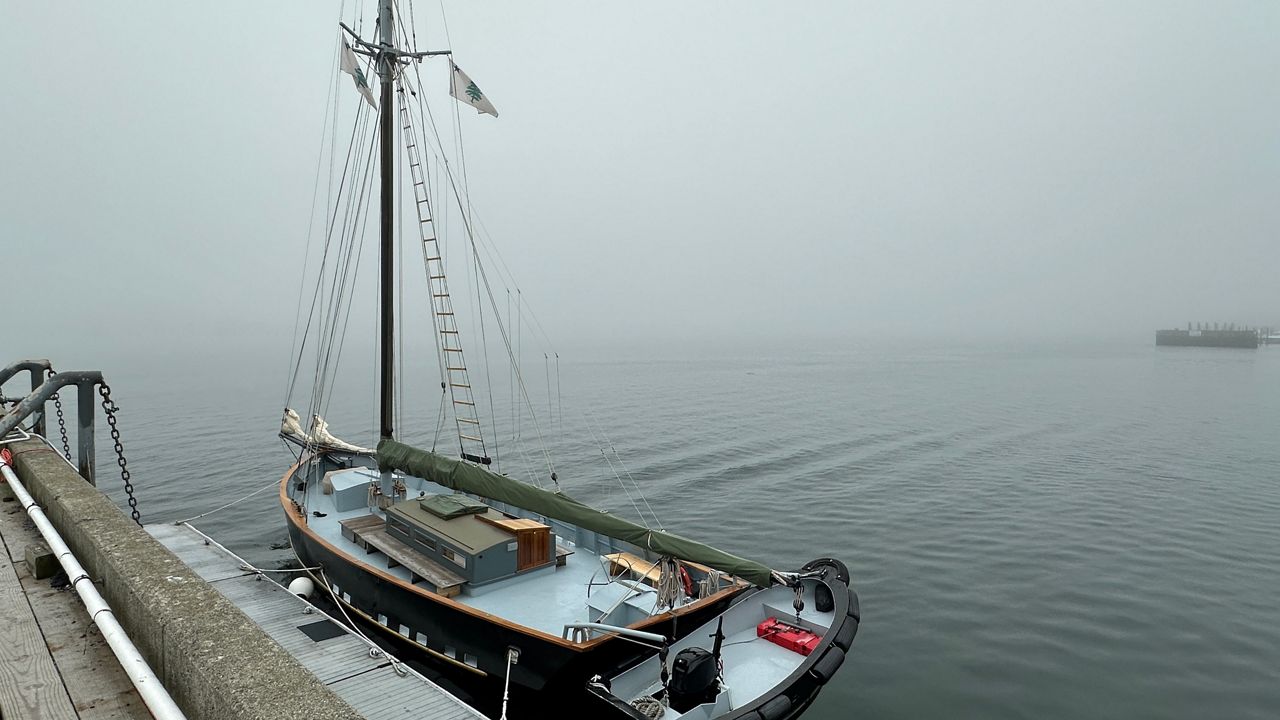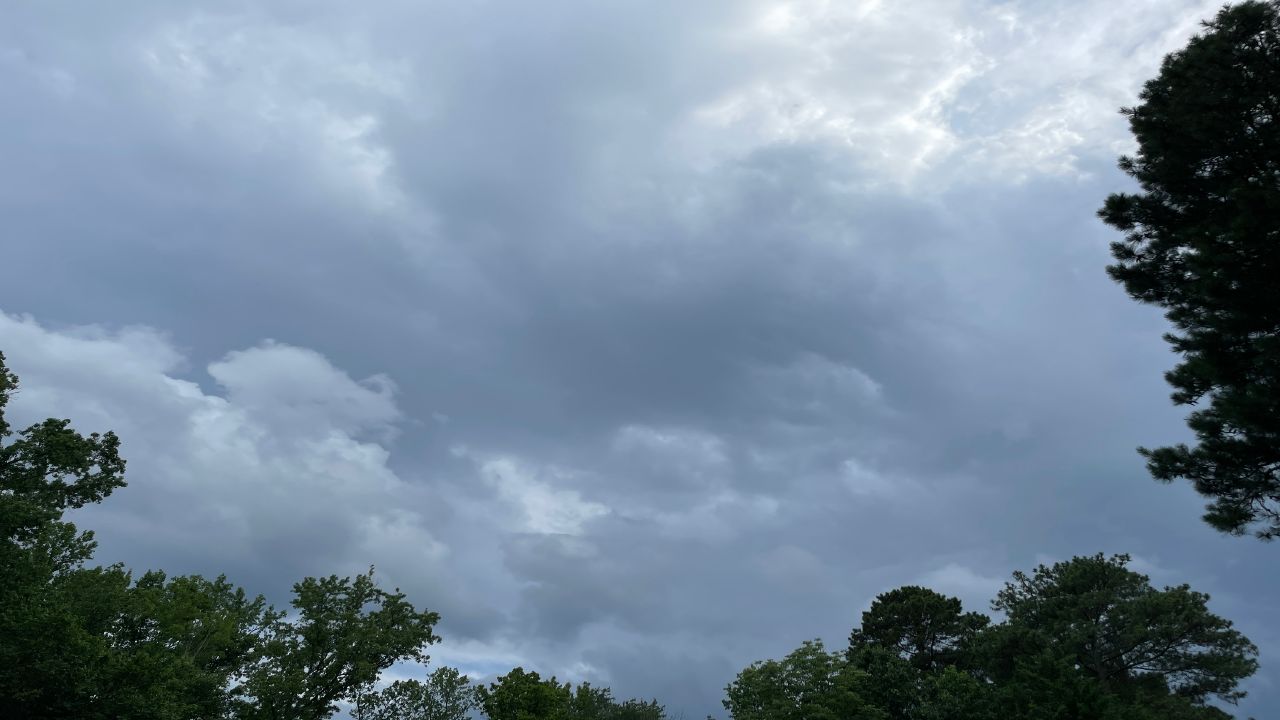State scientists in Maine are beginning to test for toxic chemicals called PFAS on hundreds of farms that may have been spread decades ago with fertilizer made from sewage sludge.
The state testing program is expected to take years, but it’s already upended the lives of some farmers who’ve learned their land and water may have been contaminated long before they bought it, causing uncertainty for their products, their health and the future of their businesses.
Advocacy groups are now calling for more aid and regulation of sludge and these industrial substances, which are sometimes called forever chemicals.
“Until now, this wasn't ever something that anybody knew that they had to look for,” said Sarah Alexander, who leads the Maine Organic Farmers and Gardeners Association. “I think that as other states start to look into this … this is going to become more of a national story.”
We answer some questions about what this sludge and these chemicals are, how they’ve spread in Maine, and what it all means for the state’s farmers and residents:
PFAS stands for per- and poly-fluoroalkyl substances, a group that covers thousands of chemicals, including ones that might be more familiar, like PFOA. They were created by the 3M and DuPont chemical companies decades ago to make things “resistant” to effects like grease, fire, water, stains and more. It means PFAS have been an ingredient in a huge range of household and industrial products, including nonstick cookware, food wrappers, stain-resistant carpets, ski wax and a kind of fire-fighting foam widely used at airports and by the military.
These chemicals take years or decades to break down in soil, water, animals, some plants and human bodies. They can be passed to babies in utero or breast milk, and their ubiquity means they’ve built up at high levels across the world. Studies have linked very low levels of PFAS exposure to health problems including kidney and liver issues, high cholesterol, pregnancy and reproductive risks, developmental delays, immune deficiencies and potentially some cancers.
Across the country, many class-action lawsuits against makers and users of PFAS are ongoing, including allegations that the chemicals’ inventors knew decades ago that the substances would pose environmental and health risks. Only a small subset of the many chemicals that fall into the PFAS category have been thoroughly studied. There’s also evidence that a new class of chemicals meant to replace PFAS, called GenX, can create many of the same problems.
The U.S. government asked domestic industries to voluntarily stop using PFAS in the early 2000s, but new and old contamination from the chemicals has emerged as a huge problem for drinking water, around landfills, near factories and military sites that use the chemicals, and more. PFAS are not yet subject to any enforceable federal regulations, and a federal health guideline level for the chemicals is much higher than most states and researchers have deemed safe. Maine is one of a handful of states that have adopted drinking water limits on PFAS, and is also requiring the chemicals to be phased out of all products sold in the state by 2030.
Sewage plants clean up household and industrial wastewater to government standards so it can be put back into the environment. Some of the solid “sludge” left behind from this treatment process can be cleaned further to become compost or fertilizer that’s often called biosolids.
These solids are full of nutrients that can be good for creating healthy soil and growing crops. Dealing with sludge is also a huge part of wastewater plants’ operating costs, and selling it as fertilizer can be a key revenue source that cuts down on the need for costly landfilling. There are strict rules for how biosolids must be treated and where they can be spread, weeding out regulated hazards like E. coli and arsenic.
PFAS is also a major concern in wastewater – not because sewage plants themselves create it, but because PFAS washes down drains from products like nonstick pans, waterproof fabrics, make-up, out of our bodies and the environment. Biosolids can concentrate this PFAS further.
In Maine, from the 1970s to the 2000s, hundreds of fields were spread with this kind of sludge. A state map published late last year shows locations that got permits for this treatment, and the state is now testing those locations to see which may have been contaminated with PFAS. Sarah Alexander, with the organic farming group, says the effects of sludge spreading appear to vary based on factors such as the size of the treated area, how much fertilizer was used, the source of the wastewater used to create it, and the crops grown on that land in the years since.
Sewage plants generally aren’t required to filter PFAS out of their water or solids yet, because states have not adopted limits on PFAS in sludge or in the surface water these facilities typically discharge to or in. Some industrial sewage sources are beginning to agree on a case-by-case, voluntary basis to “pre-treatment,” filtering out the chemicals on their end to help sewage plants prevent contamination and lower potential future compliance costs.
Some of the worst PFAS contamination in Maine is linked to sludge from paper mills that used the chemicals in protective coatings, but almost all biosolids tend to contain at least low levels of PFAS. Research shows it doesn’t take much PFAS to pose potential health risks, especially with long exposure such as from unknowingly drinking contaminated water for years.
The North East Biosolids and Residuals Association, an industry group that has pushed back on efforts like Maine’s to regulate PFAS in sludge, argues that most biosolids are not contaminated enough to pose an unacceptable risk or merit the cost of intervention.
“These are coming down the pipe from our daily environments or everyday uses of products that contain these things and have for decades,” NEBRA special projects manager Ned Beecher said in an interview. “Those background levels, as we like to call them, are very different from where there is significant industrial or firefighting input to a wastewater facility that causes … pretty dramatically higher levels in the wastewater and any resulting biosolids.”
Groups that want more PFAS regulation in Maine, such as Defend Our Health, disagree. Advocacy director Sarah Woodbury says almost all sludge the state has tested has been above a strict screening level set to find PFAS contamination. Some contamination may be lower than the federal health advisory limit for PFAS, but still higher than what the state considers safe.
Farmers and organizations like Defend Our Health are pushing for the Maine Legislature to pass a bill banning the use of sludge altogether to prevent PFAS contamination.
“I would just hope that folks understand that this stuff is toxic, it should not be being spread on our farmlands, and that there are other options for farmers,” Woodbury said. “There's no beneficial use if you're contaminating farmland and poisoning people.”
Data gathered by NEBRA shows that in 2018, 35% of Maine wastewater solids were sent to landfills and 40% were spread on land, down from as high as 85% in the 1990s and 2000s. By 2020, land uses had dropped again and landfilling was up to about 76%.
NEBRA argues that this is wasteful, needlessly expensive and contributes to planet-warming emissions from landfills. They say consumers and industrial wastewater generators should be the ones taking steps to ensure less PFAS ends up at sewage plants .
Defend Our Health, meanwhile, says landfilling sludge is preferable. PFAS are hard to destroy, and the state does not yet have many easy alternatives for disposing of it even after it’s filtered out of water with new treatment systems. The state Legislature was considering requiring pre-treatment for PFAS in landfill leachate, the “garbage juice” runoff that can also send concentrated contamination wastewater plants. That plan has been turned into a study.
The state plans to test more than 700 places that could be affected by sludge contamination. Right now, the state is focused on water testing at these sites, for several reasons: Most of the ground is still frozen, there are limits on PFAS in drinking water and it poses a clear health risk.
“Water is more straightforward and maybe the best indicator of contamination in other places,” Alexander said. “And then soil contamination then leads us to product contamination and looking at crops that are being grown in that soil.”
Different crops and parts of plants can absorb and store PFAS in different ways – down to corn stalks versus kernels, or roots versus leaves. Research on this is ongoing, and Alexander’s group is helping farmers decide how to manage their crops once they find contamination. Water can be made safe with filters, and new crops could be grown that will help clean up the soil or will be less affected by the chemicals.
It’s also important to note that organic farmers are not allowed to use biosolids on their land. But many in Maine bought their properties long after the land was spread with sludge. Others might have used sludge before modern organic rules, or be affected by tainted runoff from neighboring conventional farms or even fields treated with biosolids simply as a disposal method.
For now, many farmers who’ve been tested or have found contamination on their land have pulled their products from sale and are working with the state and nonprofits on next steps.
“We're very hopeful that some of these farms are going to be able to sell many of their products and have that assurance that they are safe,” Alexander said.
She said the state is working to offer bottled water and funding to cover a year of farmers’ lost income during this process. In the meantime, MOFGA and the Maine Farmland Trust have created an emergency aid fund, which they hope to expand with donations, to help with testing and short-term costs while farms are shut down – things like wages, PFAS-related health care, food if farmers have had to stop eating their own produce, and more.
Groups like Defend Our Health have called for the state to offer much more money for testing, treatment, clean-up and health interventions related to PFAS, including blood tests and medical monitoring for affected people to keep an eye on how contamination might have harmed them.
In the long run, the state or residents are likely to join national class-action lawsuits against PFAS manufacturers. But the legal picture can be run both ways. In New Hampshire, PFAS water regulations were delayed in a lawsuit from 3M, a wastewater plant and biosolids users with ties to NEBRA, the industry group – all of whom disputed the risks of the chemicals, and the costs and benefits of regulating them. NEBRA said they haven’t begun considering such steps in Maine, but they do oppose the pending bill that would ban the use of sludge.








